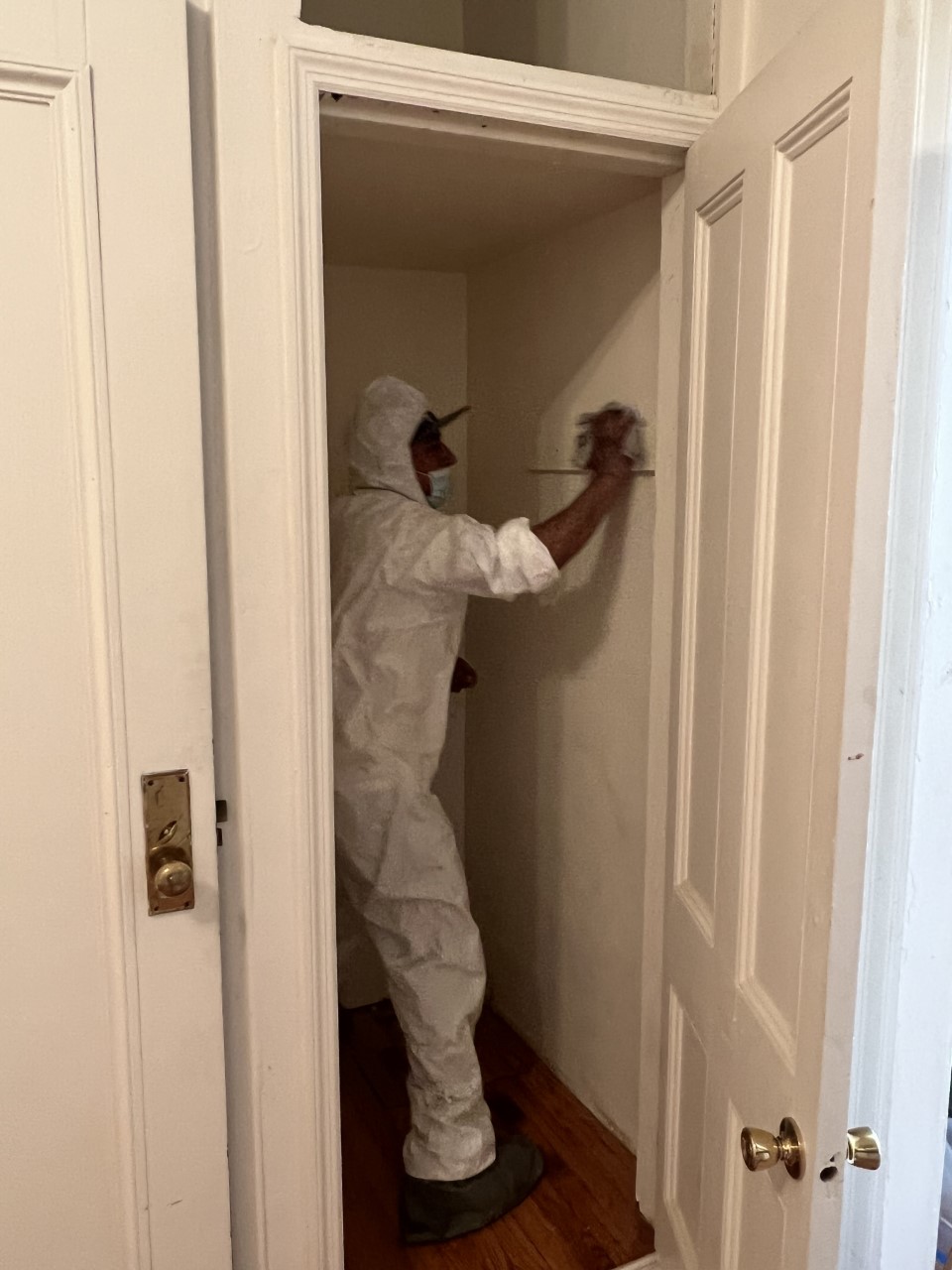NYC Lead Removal Contractors-- Obtain Safe and Efficient Solutions
Essential Devices and Strategies for Efficient Lead Violation Clean-up
Addressing lead offenses efficiently necessitates a detailed strategy that blends the right devices with tactical techniques. Simultaneously, the usage of specialized clean-up devices, such as HEPA vacuums and lead-specific cleaning representatives, is necessary for detailed impurity removal. Reliable control approaches, consisting of plastic sheeting and adverse air stress systems, are important to prevent the spread of dangerous materials.
Personal Safety Equipment
Individual protective equipment (PPE) is a critical part in the reliable monitoring of lead contamination cleanup. The vital PPE for lead cleaning includes respirators, safety garments, gloves, and eye security.
Respirators, specifically those geared up with HEPA filters, are essential for filtering air-borne lead particles, protecting against breathing. Correct fit and seal checks are essential to guarantee their efficiency. Safety apparel, consisting of coveralls and disposable suits, protects against lead dirt from adhering to employees' garments, minimizing the risk of secondary contamination. Handwear covers, typically made from nitrile or latex, shield the skin from direct call with lead, while safety goggles or full-face guards secure the eyes from dust and particles.
In addition, strenuous training on the appropriate use and maintenance of PPE is vital. Workers must be informed on wearing and doffing treatments to stay clear of contamination. Routine examinations and replacements of PPE elements are essential to maintain their protective capacities, making sure a secure and certified cleanup procedure.
Specialized Cleaning Tools

Another essential tool is the wet/dry vacuum cleaner, which can successfully clean up both dirt and fluid pollutants. These vacuum cleaners typically come with HEPA filters to offer an additional layer of security. Wet cleans or tack towels are also important for surface cleansing; they are especially designed to record and hold lead particles, minimizing the danger of spreading contamination.
For more persistent deposits, specialized lead-removal cleaning agents are required. These representatives are created to damage down lead bits, making them less complicated to eliminate. Scrub brushes with durable bristles can assist in this procedure, specifically on harsh surfaces where lead dust often tends to stick much more highly.
Additionally, encapsulants are used to seal lead-contaminated surface areas, preventing the release of lead dirt. These specialized paints and finishings are designed to adhere to various substratums, giving a long-term option for lead containment.
Effective Control Approaches
Efficient containment approaches are vital in minimizing Read Full Report the spread of lead contamination throughout cleanup activities. Applying durable containment methods makes sure that lead bits do not move to unaffected areas, thus shielding both workers and the environment. One primary approach is using plastic bed linen to seal polluted zones. Durable polyethylene obstacles can be installed from floor to ceiling to develop a regulated workplace, significantly lowering the risk of airborne lead dirt dispersal.

To enhance control, read the article encapsulants can be related to surfaces that are not being removed or disturbed. These specialized finishes bind lead dust, decreasing its schedule for resuspension. In addition, all workers should use proper Personal Safety Devices (PPE), including respirators and disposable matches, to avoid contamination spread.
Safe Disposal Practices
Making sure secure disposal practices is an essential element in the administration of lead contamination clean-up. Proper disposal minimizes the risk of lead re-entering the atmosphere and endangering public health and wellness (DOH & HPD Lead Violation Removal NYC).
Carrying lead waste calls for adherence to strict guidelines. Utilizing accredited hazardous waste carriers guarantees that the materials are dealt with properly. Paperwork, including shows up describing the type and amount of waste, ought to accompany deliveries to track the waste from the site of beginning to its final disposal destination.
Designated contaminated materials disposal centers are geared up to handle lead-contaminated products securely. These centers frequently employ innovative techniques such as stablizing, solidification, or chemical treatment to neutralize the lead before disposal. Landfilling in specialized, lined locations that avoid leachate from infecting groundwater is a typical go to website technique for final disposal.
Regular training for personnel involved in lead garbage disposal is essential to preserve security standards and avoid unintended direct exposure. By sticking to these techniques, companies can substantially minimize the ecological and health impacts connected with lead contamination.
Regulatory Conformity Tips

Sticking to regulative compliance is vital in the successful execution of lead contamination clean-up. Recognizing and following government, state, and local guidelines guarantees not just the safety and wellness of individuals yet also the legal and monetary health of the cleaning organization. The Environmental Defense Firm (EPA) sets rigid standards, such as the Lead Restoration, Fixing, and Painting (RRP) Guideline, which mandates correct qualification and training for professionals handling lead-based tasks.
Compliance starts with a detailed evaluation of appropriate regulations and regulations. Organizations needs to stay upgraded on any type of legislative adjustments, which can be helped with via regular training sessions and registering for sector updates. Documents is another crucial conformity element; keeping comprehensive records of all tasks, including evaluation reports, staff member training logs, and disposal materializes, is vital.
Furthermore, engaging with accredited lead assessors or risk assessors ensures that lead risks are correctly determined and alleviated. Employers need to impose using Individual Safety Equipment (PPE) and ensure that security methods are strictly followed. Finally, clear interaction with stakeholders, including workers, customers, and regulatory bodies, will foster a society of conformity and liability, eventually adding to a more secure and much more effective lead cleanup process.
Conclusion
Efficient lead offense cleaning demands the assimilation of specialized devices and strategic methods to guarantee safety and security and efficacy. Making use of HEPA vacuum cleaners, specialized cleansing agents, and reliable containment techniques such as plastic sheet and negative atmospheric pressure systems is critical. Personal safety tools (PPE) safeguards workers from direct exposure, while risk-free disposal techniques and stringent adherence to governing compliance are essential for responsibly handling dangerous waste. Collectively, these measures dramatically minimize wellness risks and add to a cleaner atmosphere.